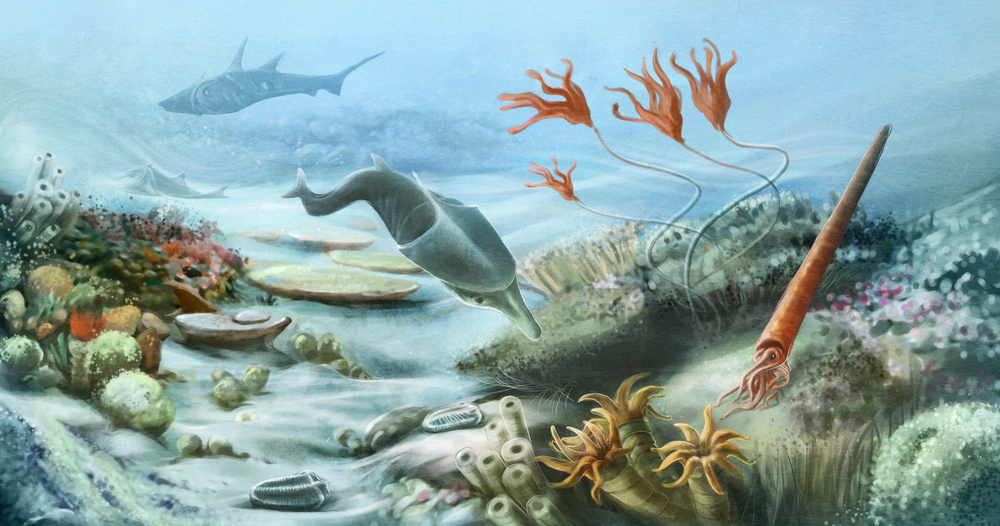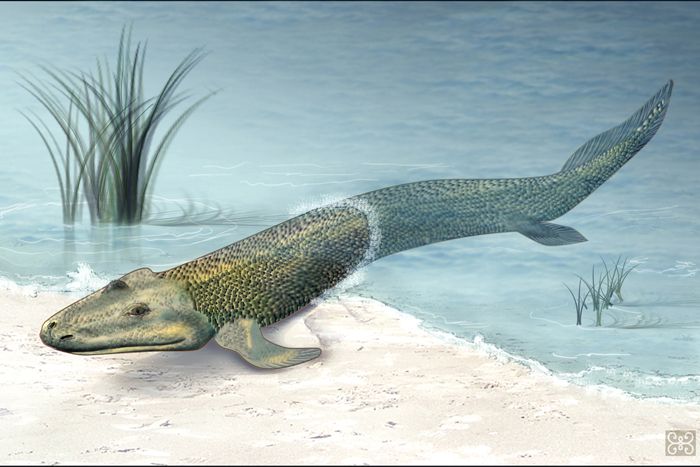Paleozoic
The Age of Ancient Life

The Paleozoic Era (541–252 million years ago) was a time of dramatic geological, climatic, and biological changes that set the foundation for modern life on Earth. Spanning nearly 290 million years, it saw the rise of complex life forms, the formation of vast marine ecosystems, the colonization of land by plants and animals, and multiple mass extinctions. This era is divided into six periods: Cambrian, Ordovician, Silurian, Devonian, Carboniferous, and Permian.
Cambrian Period (541–485 million years ago): The Explosion of Life
Ordovician Period (485–443 million years ago): First Vertebrates and Mass Extinction
The Paleozoic Era began with the Cambrian Explosion, an event that saw the rapid diversification of life, particularly in the oceans. Trilobites, brachiopods, and early mollusks thrived, while the first vertebrates—primitive jawless fish—appeared. Marine life was dominant, and Earth’s continents were mostly covered by shallow seas.
The first coral reefs developed, and early fish diversified. Life continued to thrive in the oceans, with the appearance of cephalopods and the first jawed fish. Plants began to colonize land, laying the groundwork for future terrestrial ecosystems. However, the Ordovician-Silurian Extinction, one of Earth's first major mass extinctions, wiped out nearly 85% of marine species, likely due to climate changes and glaciation.

Silurian Period (443–419 million years ago): Life Expands onto Land
Devonian Period (419–359 million years ago): The Age of Fishes
During the Silurian, Earth’s climate stabilized, and life recovered. The first vascular plants emerged on land, allowing for the development of primitive terrestrial ecosystems. Jawed fish, including early sharks, evolved in the oceans, and arthropods such as scorpions and millipedes began colonizing the land. Coral reefs expanded, creating complex marine habitats.
The Devonian Period saw an explosion in fish diversity, including early lobe-finned fish, which would later give rise to amphibians. The first tetrapods (four-limbed vertebrates) evolved, marking the transition from water to land. Plants, including the first trees, spread across the continents, forming the first forests. However, the period ended with the Late Devonian Extinction, which primarily affected marine life and wiped out many fish species.
Carboniferous Period (359–299 million years ago): Coal Forests and Giant Insects
Permian Period (299–252 million years ago): The Rise of Reptiles and the Great Dying
During the Carboniferous, vast swampy forests covered much of the land, forming today's major coal deposits. High oxygen levels allowed giant insects, such as Meganeura (a dragonfly with a wingspan of over two feet), to thrive. Amphibians became the dominant land vertebrates, and the first reptiles evolved, marking a crucial step in vertebrate evolution.
The Permian saw the diversification of reptiles, including early ancestors of mammals. Pangaea, a supercontinent, formed, causing extreme climate changes and arid conditions. The era ended with the Permian-Triassic Extinction, also called "The Great Dying," the most severe extinction event in Earth’s history, wiping out over 90% of marine species and 75% of terrestrial life. This event paved the way for the Mesozoic Era and the rise of the dinosaurs.
